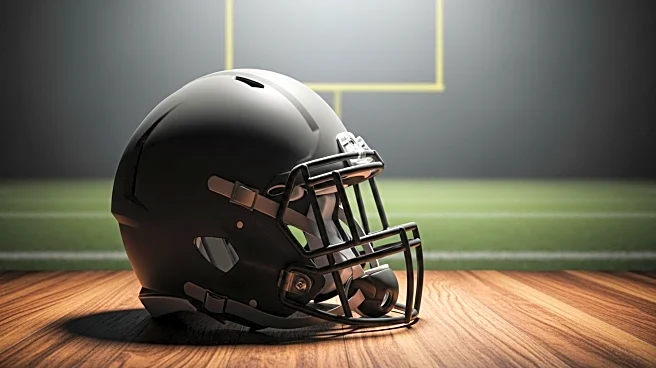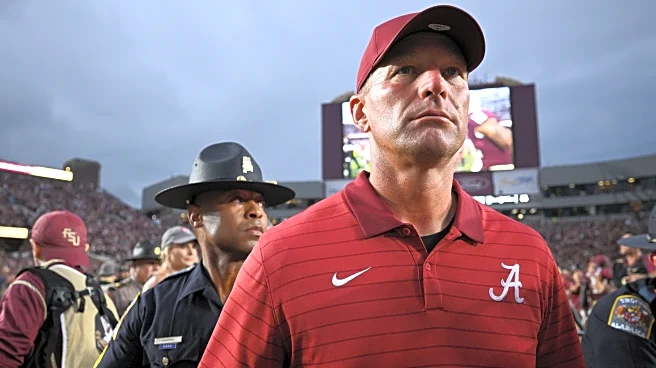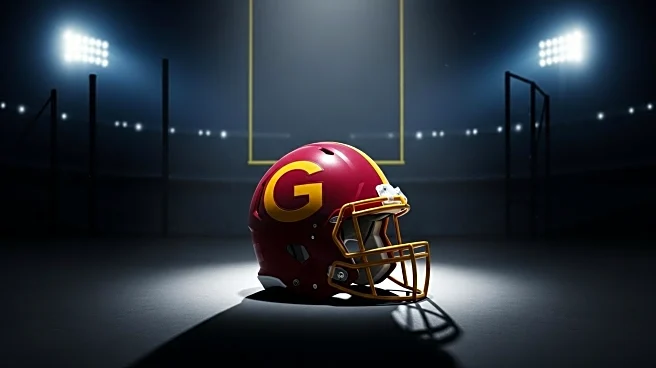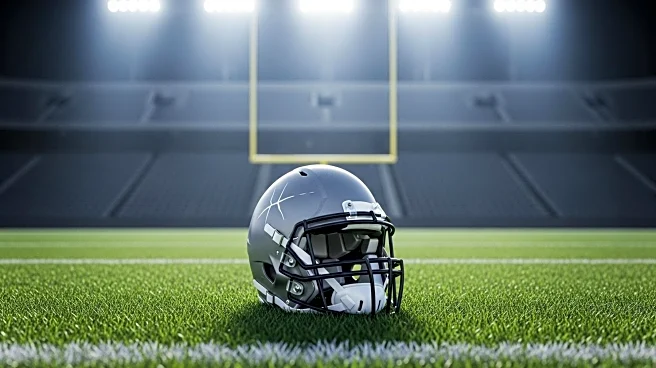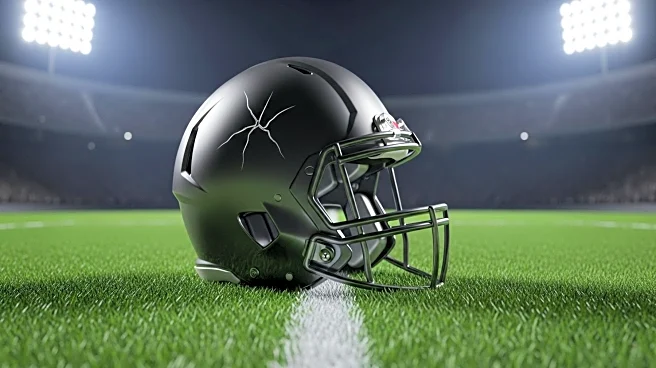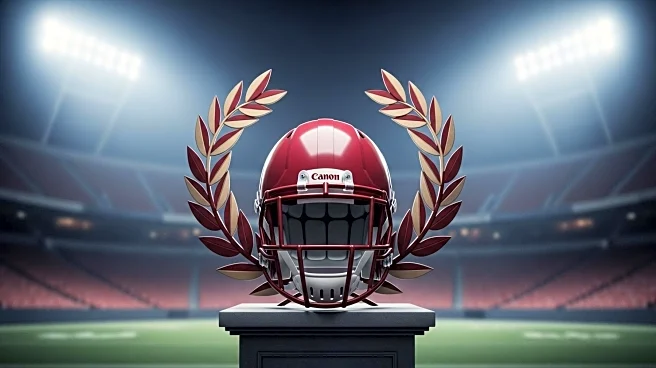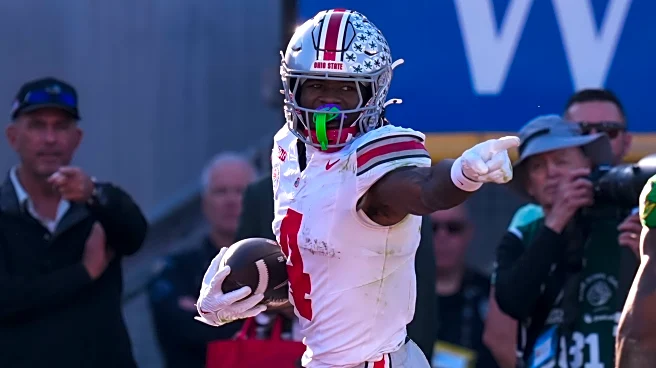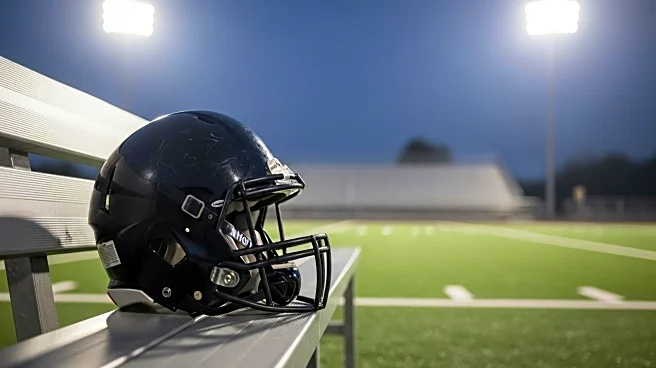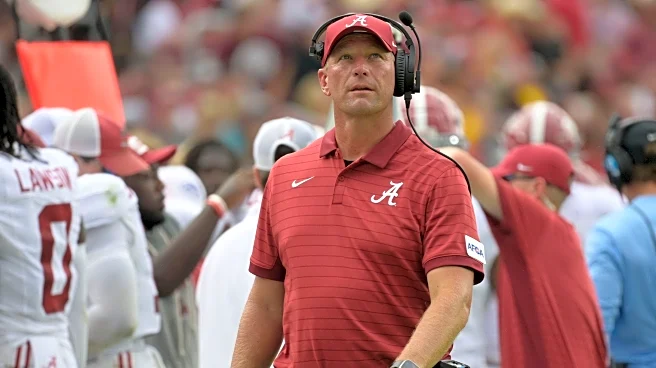What's Happening?
Alabama's star receiver Ryan Williams sustained a concussion during the second half of the team's 31-17 defeat against Florida State. The incident was confirmed by Alabama's coach Kalen DeBoer, although no further details were provided regarding Williams' condition. Williams, who had five receptions for 30 yards in the game, is entering his sophomore season after leading Alabama with 865 receiving yards and eight touchdown catches as a freshman in 2024. The Crimson Tide, ranked eighth, will face Louisiana-Monroe on September 6 and Wisconsin on September 13 before starting their Southeastern Conference schedule against Georgia on September 27.
Why It's Important?
Ryan Williams' injury is a significant setback for Alabama, as he is a key player in their offensive lineup. His absence could impact the team's performance in upcoming games, especially as they prepare to face strong opponents like Georgia in their conference schedule. The concussion raises concerns about player safety and the protocols in place to protect athletes from head injuries. Alabama's ability to adapt to this loss and maintain their competitive edge will be crucial in their pursuit of a successful season, particularly after missing the 12-team playoff last year.
What's Next?
Alabama will need to adjust their strategy to compensate for Williams' absence, potentially relying more on other receivers or altering their offensive approach. The team will be closely monitoring Williams' recovery and adhering to concussion protocols to ensure his health and safety. Upcoming games against Louisiana-Monroe and Wisconsin will serve as opportunities for Alabama to test their revised strategies and prepare for their conference opener against Georgia. The coaching staff will likely focus on strengthening the team's resilience and depth to handle such challenges.
Beyond the Headlines
The incident highlights the ongoing issue of concussions in football and the importance of effective safety measures. It underscores the need for continued research and development of protective equipment and protocols to minimize the risk of head injuries. The situation also brings attention to the pressures faced by college athletes, who must balance performance expectations with health concerns. As discussions around player safety evolve, this case may contribute to broader conversations about improving conditions for athletes at all levels.
